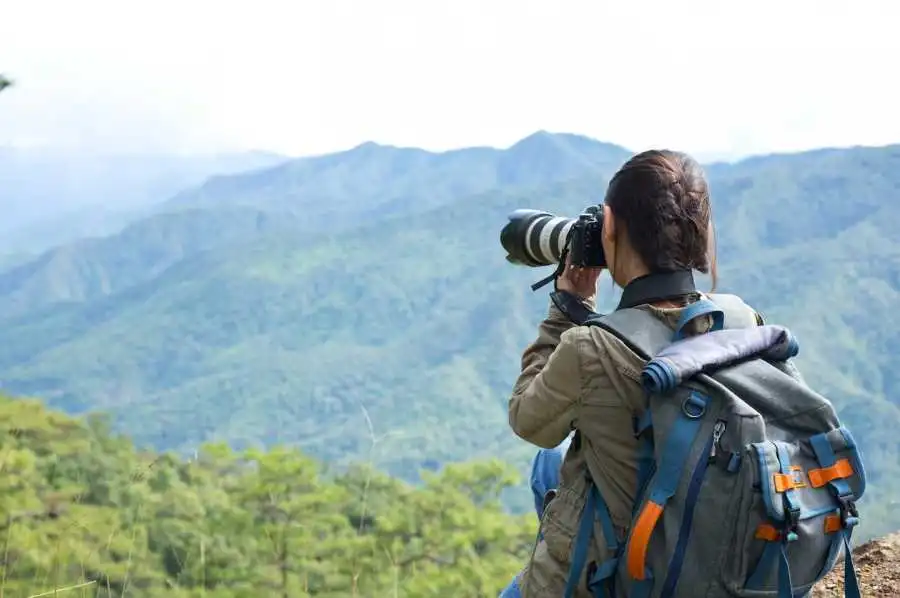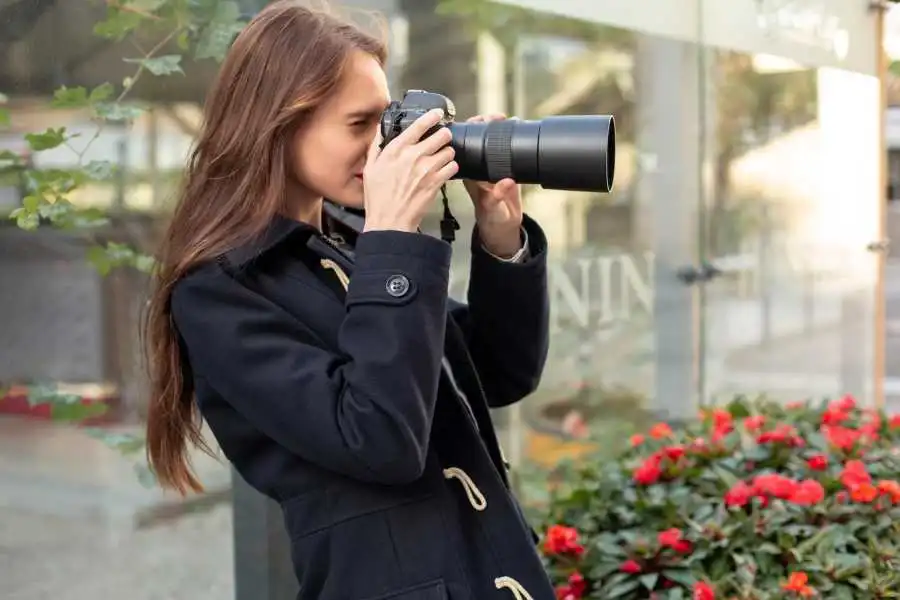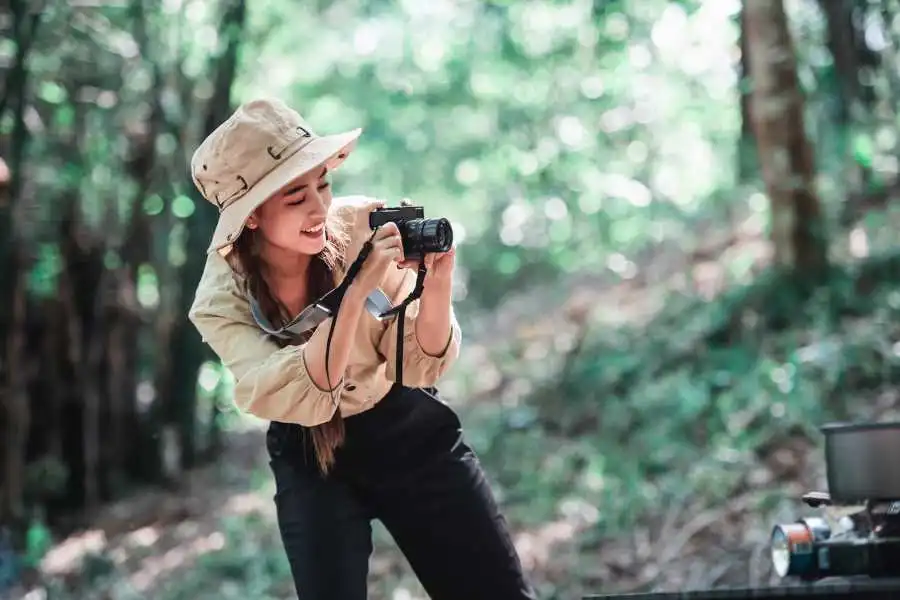12 Easy Photography Tips That Will Make Your Photos Pop

Photography is a captivating art form that allows us to freeze moments in time and express our creativity through images. Whether you’re a beginner or an experienced photographer, there are always ways to improve your skills and make your photos stand out. In this article, we will explore ten easy photography tips that will make your photos pop, helping you capture stunning images that leave a lasting impression.
Table of Contents
1. Photography Tips: Understanding composition
Composition refers to the organization and placement of visual elements within a photograph. It plays a vital role in creating visually pleasing and balanced images. To enhance your composition skills, consider the following techniques:
Rule of thirds
The rule of thirds, an essential guideline in photography composition, involves envisioning the frame divided into a grid of nine equal sections, formed by two horizontal and two vertical lines. By placing your main subject along these lines or at their intersections, you create a more visually dynamic composition.
Leading lines
Leading lines are lines within an image that guide the viewer’s eyes toward the main subject. They can be straight, curved, or diagonal lines such as roads, fences, or rivers. Utilizing leading lines adds depth and visual interest to your photos.
Symmetry and patterns
Symmetry and patterns can create striking and captivating compositions. Look for naturally occurring symmetrical elements or repetitive patterns in your surroundings and use them to your advantage.
Framing
When it comes to framing your photographs, incorporating natural elements can significantly enhance the depth and focal point of your images. Whether it’s the captivating outline of a window, the inviting entrance of a doorway, or the graceful branches of a tree, using these elements as frames can add a compelling dimension to your composition. By skillfully framing your subject, you not only capture attention but also create a more captivating and engaging visual experience for the viewer.
2. Photography Tips: Mastering lighting
Lighting is a crucial aspect of photography and can dramatically affect the mood and overall quality of your images. Here are some helpful tips to assist you in mastering the art of lighting:
Golden hour
The golden hour refers to the period shortly after sunrise or before sunset when the natural light is soft and warm. This time of the day offers beautiful lighting conditions, casting long shadows and creating a magical atmosphere.
Natural vs. artificial light
Experimenting with different light sources can yield unique results. Natural light provides a soft and diffused illumination, while artificial light allows for more control over the lighting conditions. Understanding the characteristics of each light source will help you make informed decisions when capturing your shots.
Diffused light
Harsh sunlight can create strong shadows and high contrasts, which may not always be desirable. Shooting in diffused light, such as on an overcast day or in the shade, produces softer and more even lighting, enhancing the details in your photos.
3. Photography Tips: Choosing the right equipment
Having the right equipment can make a significant difference in the quality of your photographs. While it’s not necessary to invest in expensive gear right away, knowing how different equipment affects your images can help you make informed decisions. Consider the following:
Cameras
There is a wide range of cameras available, from smartphones to DSLRs and mirrorless cameras. Each type has its advantages and limitations. Understanding your camera’s features and settings will allow you to make the most of its capabilities.
Lenses
Lenses come in various focal lengths and aperture ranges, each serving a different purpose. Wide-angle lenses are great for capturing landscapes, while telephoto lenses are ideal for wildlife or sports photography. Experimenting with different lenses will help you find the ones that suit your photography style.
Tripods and stabilizers
Using a tripod or stabilizer can significantly improve the sharpness and stability of your photos, especially in low-light conditions or when capturing long exposures. Investing in a sturdy tripod or a handheld gimbal stabilizer can greatly enhance your photography.
4. Photography Tips: Exploring different angles and perspectives
Changing your perspective & exploring different angles can add a very unique touch to your photographs. Here are some angles and perspectives:
Bird’s-eye view
Capture your particular subject from a high vantage point, such as climbing on a hill or using a drone. This perspective offers a different & often more intriguing view of your particular subject.
Worm’s-eye view
Get down very low & shoot from ground level to create a sense of grandeur or make your particular subject appear larger than life. This perspective works particularly well for photographing architecture or capturing unique patterns.
Low angles
Shooting from a very low angle can make your particular subject appear more powerful & dominant. It is a great technique to use when photographing people or objects with strong vertical lines.
High angles
Photographing from a very high angle provides a different perspective & can be used to emphasize patterns or capture different compositions. It works well for subjects like landscapes or crowds of people.
5. Photography Tips: Utilizing depth of field
Depth of field is the term used to describe the extent of distance within a photo that appears sharp & in focus. By understanding & controlling depth of field, you can draw attention to particular subjects or create a sense of depth in your images. Consider the following techniques:
Shallow depth of field
Using a wide aperture (small f-number) creates a shallow depth of field, where only a small portion of the image is in focus while the rest is blurred. Portrait photographers frequently employ this technique to separate the subject from the background, creating a distinct focus on the individual being photographed.
Deep depth of field
To capture a scene with great detail from the foreground to the background, use a narrow aperture (large f-number) for a deep depth of field. Landscape photographers frequently utilize this technique as a common practice in their craft.
Bokeh effect
Bokeh refers to the pleasing blur created in the out-of-focus areas of an image. Achieving a beautiful bokeh effect can enhance the overall aesthetics of your photo, especially in situations where the background contains lights or specular highlights.
6. Photography Tips: Using color effectively
Color has a significant impact on the mood and visual impact of your photographs. Understanding color theory and using it effectively can elevate your images. Consider the following tips:
Color theory
Learn about the color wheel, color harmony, and the emotions associated with different colors. Complementary colors (colors opposite each other on the color wheel) can create vibrant and visually appealing compositions.
Contrast and complementary colors
Utilize contrasting colors to make your subject stand out from the background. Complementary colors can be used to create a harmonious balance within your images.
Color grading
During post-processing, you can enhance or alter the colors in your images to create a specific mood or style. Experiment with different color grading techniques to achieve the desired effect.
7. Photography Tips: Capturing motion
Photography allows us to freeze a moment in time, but capturing motion can add a dynamic and energetic element to your photos. Consider the following techniques:
Freezing motion
Using a fast shutter speed freezes the motion in your frame, capturing a moment with crisp details. This technique is commonly used in sports and wildlife photography.
Long exposure
Long exposure photography involves using a slow shutter speed to capture motion over an extended period. This technique can create stunning effects such as silky-smooth waterfalls, light trails, or starry skies.
Panning
Panning involves tracking a moving subject while using a slow shutter speed. This technique allows you to keep the subject sharp while blurring the background, conveying a sense of speed and motion.
8. Photography Tips: Post-processing techniques
Post-processing is an essential step in digital photography that allows you to fine-tune and enhance your images. Here are some basic techniques to consider:
Basic adjustments
Adjusting exposure, contrast, highlights, and shadows can help bring out the best in your photos. Use editing software to make these adjustments and ensure a well-balanced image.
Retouching
Remove distractions or blemishes from your photos using retouching tools. However, it is important to keep in mind the importance of preserving a natural and realistic appearance.
Enhancing colors
Use saturation, vibrance, and selective color adjustments to enhance the colors in your images. Be careful not to overdo it, as excessive saturation can make your photos look unnatural.
Cropping and resizing
Cropping allows you to eliminate unnecessary elements and focus on the main subject. Resizing your images appropriately ensures they display correctly on different platforms or for printing purposes.
9. Photography Tips: Experimenting with composition rules
While composition rules provide a solid foundation, don’t be afraid to break them and experiment. Here are a few additional composition techniques to consider:
Rule of odds
Including an odd number of elements in your photo, such as three or five, can create a sense of balance and visual interest.
Fill the frame
Get closer to your subject and fill the frame with it, emphasizing its details and textures. This technique works well for macro photography or capturing intricate patterns.
Negative space
Negative space refers to the empty or unoccupied areas in your photo. Using negative space effectively can create a sense of simplicity, minimalism, or solitude.
Centered composition
While the rule of thirds suggests placing your subject off-center, sometimes centering your subject can create a powerful and symmetrical composition. Experiment with centered compositions to create impactful images.
10. Photography Tips: Telling a story through photography
Photography is a powerful medium for storytelling. Consider the following tips to tell compelling stories through your images:
Creating a narrative
Think beyond individual shots and aim to capture a series of images that tell a story. Plan and compose your shots to convey a narrative or evoke a specific emotion.
Including human elements
Incorporating people or human elements in your photos can add depth and evoke emotions. It can also provide a sense of scale or a focal point for the viewer.
Capturing emotions
Strive to capture genuine emotions in your photographs. Whether it’s joy, sadness, or awe, genuine emotions can bring your photos to life and resonate with viewers.
11. Photography Tips: Developing a personal style
Developing a personal style in photography helps you stand out and create a cohesive body of work. Here are some tips to develop your own unique style:
Finding inspiration
Seek inspiration from other photographers, artists, and different genres of photography. Analyze what resonates with you and incorporate those elements into your own work.
Practicing consistently
The more you practice, the more you’ll improve your skills and develop your style. Make it a habit to photograph regularly, even if it’s just in your everyday surroundings.
Experimenting and taking risks
Don’t be afraid to step out of your comfort zone and try new techniques or explore unconventional subjects. Taking risks can lead to unique and innovative photographs.
12. Photography Tips: Staying patient and persistent
Photography requires patience and persistence. Here are some reminders to keep in mind:
Waiting for the perfect shot
Sometimes, the perfect shot requires waiting for the right moment or the ideal lighting conditions. Be patient and willing to invest time to capture that extraordinary image.
Learning from failures
Not every photo will turn out as expected, and that’s okay. Learn from your mistakes, analyze what went wrong, and use those experiences to improve your future shots.
Continuous learning and improvement
Photography is a never-ending learning process. Stay curious, seek opportunities to learn new techniques, and continuously improve your skills.
Conclusion
By implementing these ten easy photography tips, you can enhance your skills and make your photos pop. Remember to experiment, develop your style, and stay persistent in your photographic journey. With practice and dedication, you’ll capture stunning images that leave a lasting impression on viewers.
FAQs:
Q1. What is the rule of thirds in photography?
The rule of thirds is a composition technique that involves dividing the frame into a grid of nine equal parts and placing your main subject along these lines or at their intersections.
Q2. How can I improve the lighting in my photos?
Consider shooting during the golden hour, utilizing diffused light, and understanding the characteristics of different light sources, both natural and artificial.
Q3. What equipment do I need for photography?
While it’s not necessary to invest in expensive gear right away, having a camera, lenses, and a tripod or stabilizer can significantly enhance your photography.
Q4. How can I add depth to my photos?
Experiment with depth of field by adjusting aperture settings. Additionally, using leading lines and exploring different angles can create a sense of depth in your images.
Q5. How can I develop my own photography style?
Seek inspiration, practice consistently, and don’t be afraid to experiment and take risks. Developing your own style takes time and a willingness to explore different techniques and subjects.
Q6. How important is post-processing in photography?
Post-processing allows you to fine-tune and enhance your images. It can help correct exposure, adjust colors, and remove distractions. However, remember to maintain a natural and realistic look in your edits.
Also See:
The Magic of 5 Minute Meditation: Unveiling the Key to Inner Peace
Debt Management Made Easy: 4 Best Ways to Say Goodbye to Financial Stress!
8 Exciting Online Casino Games You Must Play!
10 Beauty Tips That Will Transform Your Daily Routine!
Power Yoga Unleashed: 9 Dynamic Flows to Sculpt Your Body and Liberate Your Mind
Seed Funding 101: The Ultimate Guide to Kickstarting Your Entrepreneurial Journey
15 Easy Side Hustles You Can Start Today with Zero Investment








